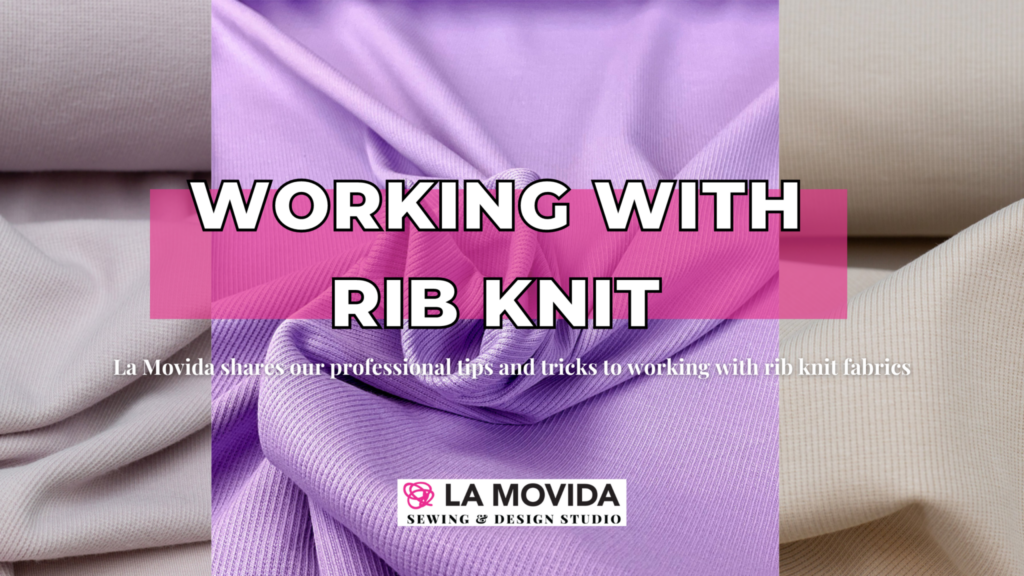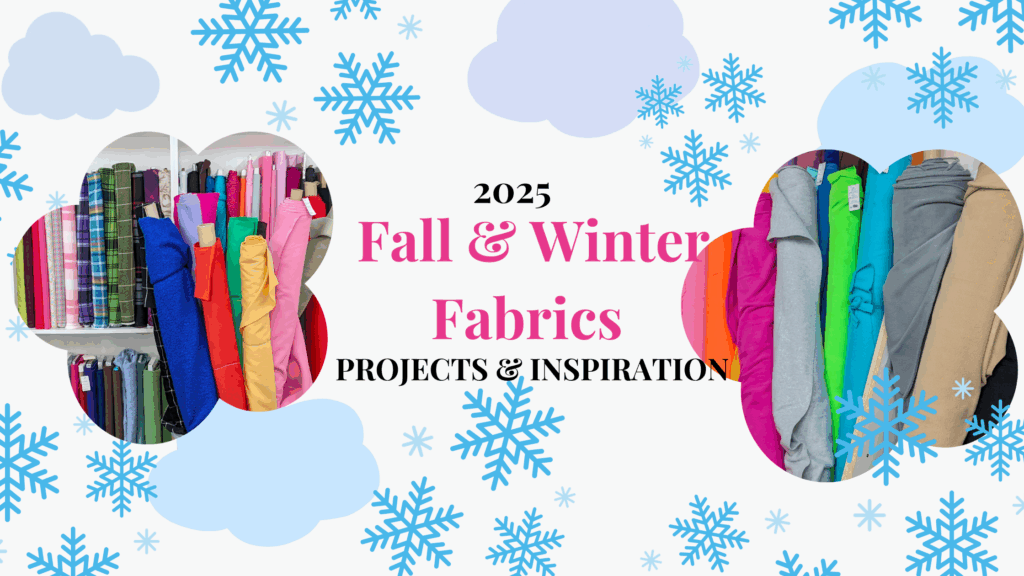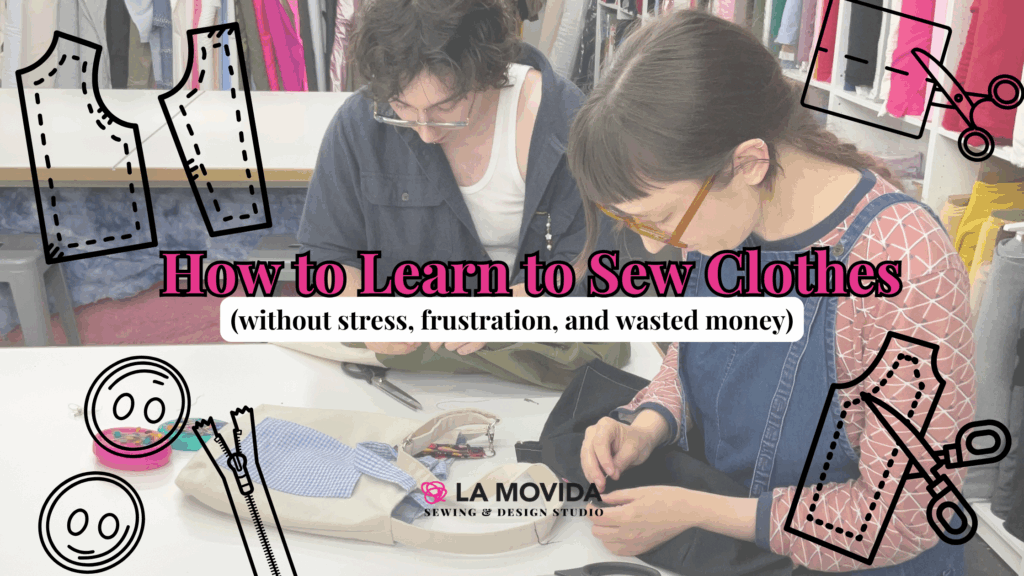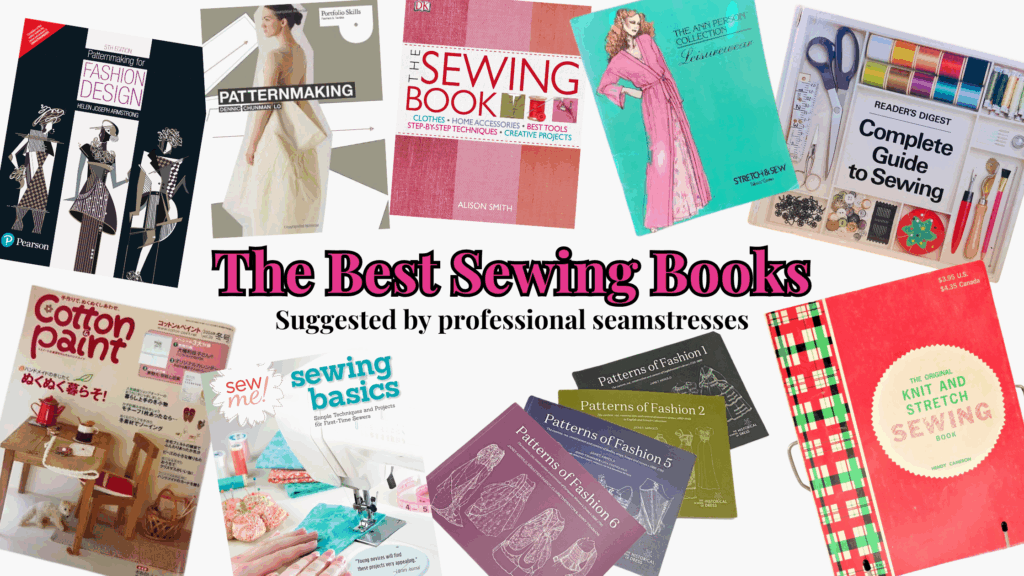We have a variety of different textures of rib knit here at the studio! They get used for everything from cuffs and collars of hoodies and t-shirts to rib knit tank tops and dresses. Rib knit fabrics are a versatile and popular choice in the world of textiles, known for their stretch, comfort, and textured appearance. Whether you’re a seasoned seamstress or a DIY enthusiast, working with rib knit fabrics can be a tricky but rewarding experience. In this blog post, we’ll explore some valuable tips to help you navigate the intricacies of rib knit fabrics and achieve professional-looking results.
Selecting the Right Rib Knit Fabric:
- Not all rib knit fabrics are created equal. Consider the fiber content, weight, and stretch of the fabric. Choose a rib knit that suits the purpose of your project.
- Here at the studio we have bamboo / cotton rib knit, it is a lighter weight more slinky fabric that has a beautiful hand. As well, we have an organic cotton rib & recycled cotton rib knit that has slightly more structure to it. Both rib knits work great for cuffs and collars but the bamboo / cotton blend can be a bit trickier to wrangle since it has less structure. Additionally, check the stretch percentage to ensure it aligns with your pattern requirements. Some rib knits are stretchier than others which can affect the fit of your garment.
Use the Right Needles:
- Rib knit fabrics require the right needles to prevent snags and pulls. Opt for ballpoint or stretch needles, which are designed to navigate through the loops of the fabric without causing damage. A smaller needle size can also help maintain the fabric’s elasticity.
Invest in Quality Thread:
- The thread you choose can significantly impact the durability of your rib knit project. Opt for high-quality polyester or cotton-covered polyester thread that provides both strength and flexibility. This ensures that the stitches will withstand the stretch of the fabric. Here at the studio we like all purpose Mettler thread, it is super durable.
Stabilize Seams and Hems:
- To prevent distortion and stretching, consider stabilizing shoulder seams, necklines, and hems with clear elastic, Stretch interfacing, or stay tape. This extra support helps maintain the garment’s shape over time and ensures a professional finish.
Experiment with Stitch Length:
- Adjusting the stitch length allows you to control the amount of stretch in different areas of your garment. For seams, use a shorter stitch length, and for hems or areas that require more flexibility, opt for a longer stitch length.
Test on Scrap Fabric:
- Before sewing your final project, test your chosen stitch and settings on a scrap piece of rib knit fabric. This allows you to make any necessary adjustments and familiarize yourself with the behavior of the fabric.
Handling Elongation:
- Rib knit fabrics are known for their ability to stretch, so be mindful of this characteristic when cutting and sewing. Here at the studio we prefer to weigh our pattern pieces down and trace around to ensure accurate cutting, with stretchy fabrics you want to be sure to put lots of pins in before cutting out and have nice sharp fabric scissors to prevent pulling and unwanted distortion.
Finishing Techniques:
- Finish your rib knit garments with care. Consider using a twin needle for hemming to create a polished, professional look. Experiment with different finishing techniques to find the one that complements your specific project.
Conclusion:
Working with rib knit fabrics may have its challenges, but with the right techniques and a bit of practice, you can create beautiful, comfortable garments that showcase the unique qualities of this versatile material. Keep these tips in mind, and you’ll be well on your way to mastering the art of working with rib knit fabrics. Happy sewing!






